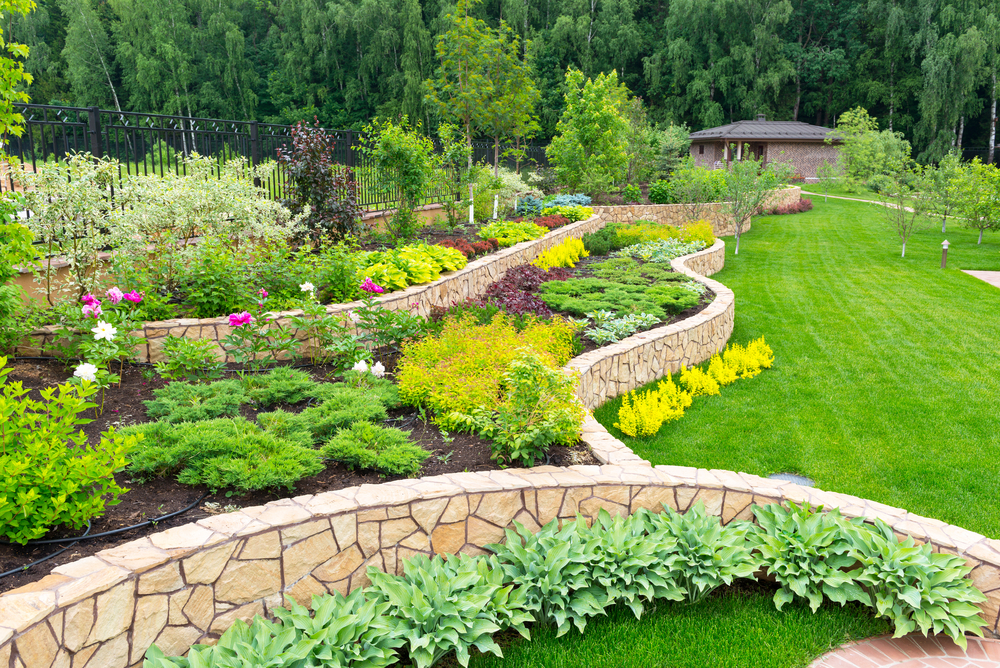As an extension of your living area, your home garden may create a warm and inviting atmosphere that raises the value of your house. You can make your garden stand out from the others in your community by adding different creative and design features. There are many methods to give your garden personality and beauty, regardless of how big or small your plot of ground is. Here are some possible landscaping components you should consider, as they will undoubtedly win the admiration and affection of everyone who sees your lovely garden. Some ideas include incorporating colorful flowers, unique sculptures, winding pathways, and cozy seating areas. By adding these elements, you can transform your garden into a peaceful retreat that will be the envy of the neighborhood. Take the time to plan and design your garden to reflect your style and create a space that brings joy and relaxation to you and your visitors. With a bit of creativity and effort, your garden can become a beautiful oasis that enhances the overall appeal of your home.
To take better care of your yard, you should know what plants will grow best in your area, choose plants that don't need much care and can handle drought, and ensure your plants get enough water. You should also carefully plan your landscaping, considering the size of your yard, how much sun it gets, and the type of dirt it has. To keep your yard neat, you should also prune and pull weeds correctly.
I'd appreciate it if you could get to know the different soil types. While certain plants do better in slightly acidic soil, others do better in slightly alkaline soil. The soil type can also affect what kinds of plants do best in a given area, ranging from sandy to clay to loamy. To find out what kinds of plants might thrive in your soil, it's recommended that you get your soil tested. An improved landscape and more prudent use of funds result from planting only those plants known to thrive in your yard's specific soil. If you have good soil and want to grow certain plants in it, but the soil needs to be corrected, you can work to improve it. Mulch, peat, crushed limestone, or clamshells are the only other ingredients required. However, they will vary according to your goals. Assuming your current situation is similar to your desired outcome, you can modify the soil to make it more receptive.
For the healthy growth of any plant, it needs to know how much room it needs. Because their roots spread out, certain plants need more room than others. If you select a plant that requires a lot of space and needs more room, it may choke or overcrowd your other plants, which might be harmful or even deadly. Furthermore, understanding the necessary distance between plants is crucial. For example, shrubs and small trees should be spaced three to four feet apart to give their branches enough room to spread out and reach their maximum potential. Your plants will thrive and offer beauty and greenery to your surroundings if you provide enough space to grow.
When you create your yard, use native plants. Using plants that grow naturally in your area is one of the best ways to build a beautiful yard. Could you find out what plants grow best in your area and which ones are native to that area? You'll be ahead of the game because you'll know the plants you choose can handle the weather. You won't have to fight against nature's trends to keep your scenery looking nice. If you use plants that aren't native to your area, ensure you know they come from a place with a temperature like yours.
Plan your landscape around different blooming times. Different plants bloom at various times throughout the year. If all of the plants in your landscape are at their most attractive all at the same time, then your yard will look beautiful for a few weeks each year but entirely possibly ugly the rest of the year. One way to help avoid this is to choose attractive bushes and shrubs that look good green but have some flowers. However, it is a good idea to stagger plants among each other. Plant tulips and crocus among later-blooming plants so that in early spring, the bulbs bloom, and then when those flowers’ time is up, the following plants will be in bloom. In this way, the cycle of your landscape is in keeping with the seasons and looks attractive all year round.
Wood chips around your trees, bushes, and shrubs are a great way to improve the look of your yard and gain many other benefits. Wood chips not only cover the ground and make it look better than bare dirt, but they also help to keep water in, keep weeds away, and release natural nutrients as they break down. You can also make the area look even better by putting pretty groundcovers like chicks and hens around your trees and shrubs.
